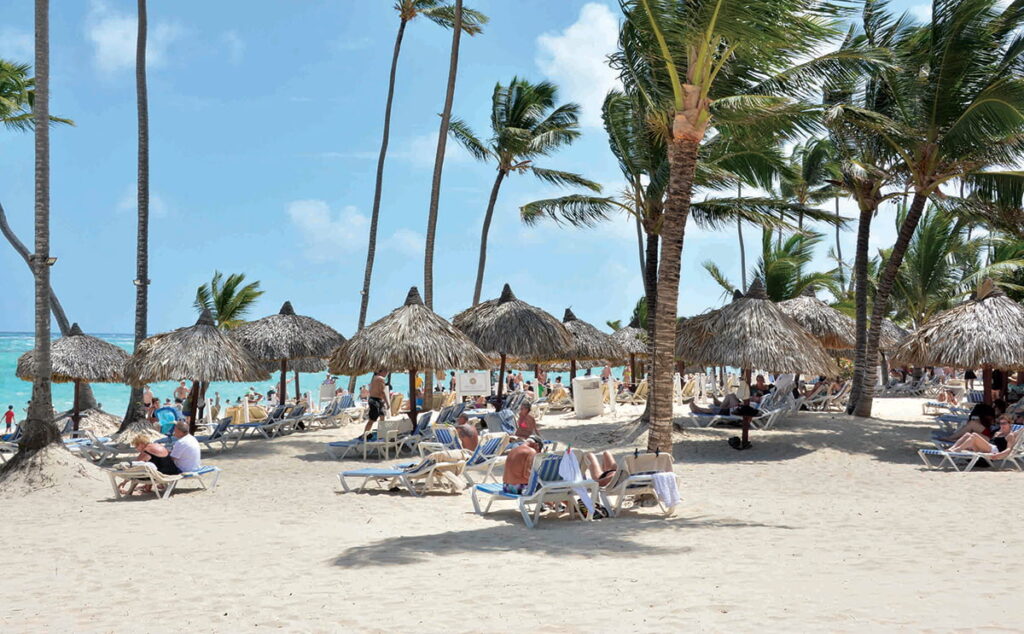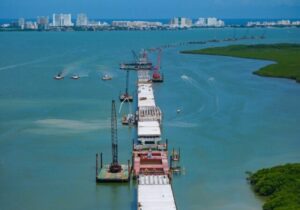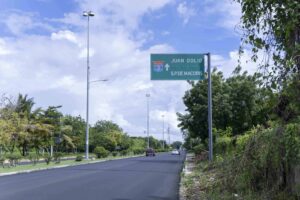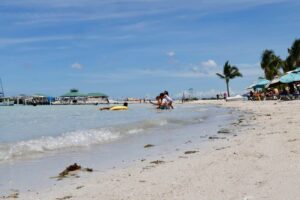
Dominican authorities are seeing a resurgence in tourist arrivals thanks to a renewed focus on emerging markets.
Puerto Rico, Colombia, Mexico, Peru and Ecuador They have become key pieces to recover tourism, after a significant drop in visitors from Europe, affected by the war between Ukraine and Russiaand rising costs for fuel and long-distance airfare.
 The Minister of Tourism, David Colladohighlighted the success of the diversified strategy during a recent presentation.
The Minister of Tourism, David Colladohighlighted the success of the diversified strategy during a recent presentation.
“We are playing in emerging markets, we are also implementing a diverse strategy with Latin American countries and it is yielding very good results,” he said.
The data reflects a notable growth in the arrival of tourists from these countries. In the first seven months of 2018, the Dominican Republic received 70,995 non-resident foreigners from the island of enchantment. In 2024, that figure has risen to 124,305.
From Colombia, the number of non-resident tourists increased from 54,802 in 2018 to 173,158 in 2024, representing an increase of 215.9%.
Mexico also showed a significant increase, with 21,326 tourists in 2018 and a projection of more than 63,959 in 2024. In addition, Peru and Ecuador sent 46,185 and 32,975 non-resident tourists, respectively, in 2024.
In general terms, the main tourist issuers for the Dominican Republic are:
- USA
- Canada
- Colombia
- Argentina
- Puerto Rico
Between January and July 2024, the country has received 6,968,449 visitors.
Maritime tourism has also seen a sharp increase. In July, the Dominican Republic welcomed 206,704 cruise passengers, marking an increase of 39% compared to the previous year, 96% more than in 2022 and 148% higher than in 2019.
During the first seven months of 2024, the country has received 1,682,449 cruise passengers and 570,063 crew members aboard 421 ships and 19 boats, according to Diario Libre.
Amber Cove leads as the busiest port with 727,844 cruise passengers, followed by Taino Bay with 641,418, The Roman with 233,545 and Santo Domingo with 9,220.
Report 2023
In an annual report (2023) conducted by the Central Bank It is explained that the year-on-year increase in tourists residing in North America offset the fall of 317,362 travelers from the European Continent.
He added that this particularly reflects the impact of the geopolitical conflict between Russia and Ukraine on the flow of tourists from these countries, which constituted approximately one third of the travellers from Europe in January-February 2022, the period prior to this war.
Added value of tourism
Tourism represents a significant part of the Dominican Republic‘s Gross Domestic Product (GDP). It generates significant revenue for the country through the arrival of international tourists, who spend on accommodation, food, transportation and recreational activities.
In addition, the tourism sector creates numerous jobs, both direct and indirect. This includes jobs in hotels, restaurants, Travel agencies, transport and tour guides, as well as in related industries such as agriculture and construction.
Tourism demand drives the improvement and expansion of infrastructure, such as airports, roads, public services and recreational areas. These improvements not only benefit tourists, but also the local population.
Tourism attracts foreign direct investment, which translates into the construction of new hotels, resorts and other facilities. This investment can also boost other sectors of the economy, such as trade and construction.
Tourism helps preserve and promote the country’s culture and historical heritage. It also encourages the conservation of natural resources and landscapes, as tourist appeal can encourage the protection of areas of ecological interest.
By relying on the tourism industry, the country can diversify its sources of income, reducing dependence on traditional sectors such as agriculture or manufacturing.
Tourism can promote development in less urbanized areas, helping to balance development between the capital and other regions of the country. Tourist areas outside the capital can benefit from new economic opportunities and improvements in quality of life.




